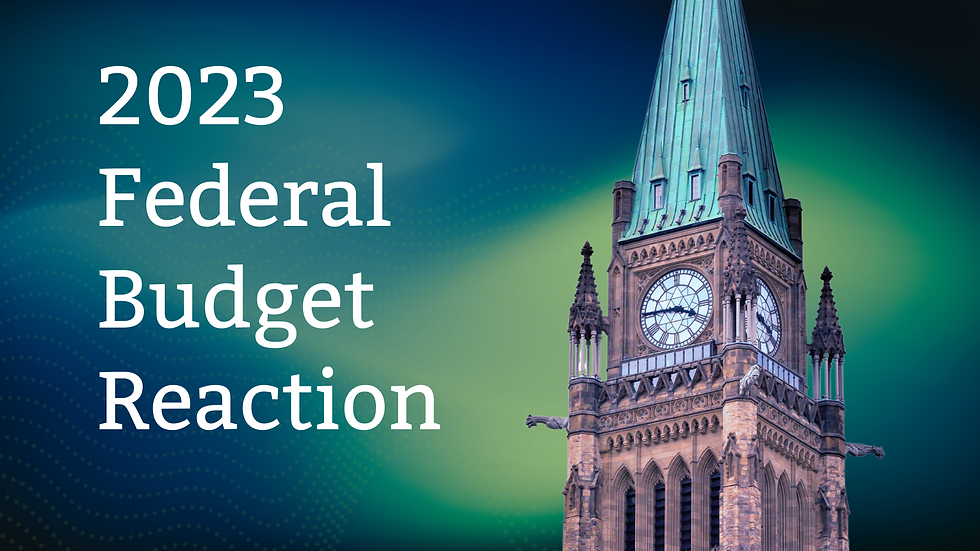Backcasting Applied to Economic Development Strategy: The Petro-lithium Exemplar
- Chad Park

- Jun 18, 2018
- 3 min read
Updated: 12 hours ago

Amidst the drama of recent pipeline and trade war news, you may be forgiven if you missed another announcement that will be important in shaping Alberta’s economic future. On May 29th, Calgary-based E3 Metals announced that it had reached an important technical milestone that moves it one step closer to being able to extract lithium from oilfield brine.
Alberta could become a key supplier of this globally-relevant material on the strength of its petroleum industry. Instead of being perceived as an enemy of the low-carbon emissions economy, oil and gas could be an enabler of it.
Those who have followed the Energy Futures Lab will likely be familiar with the story. The idea of Petro-lithium is featured as one of the EFL’s exemplar initiatives. EFL Fellow Liz Lappin is the Vice President, Project Development for E3 Metals and has engaged other EFL Fellows to help advance the idea.
E3 Metals’ recent successes have turned heads partly because it makes for such a compelling “radical middle” story. Most of the news on energy these days is the opposite. Headlines and politicians often suggest that we must either be in favour of oil and gas or in favour of a low carbon economy. With us or against us.
With that as backdrop, a story like petro-lithium breaks the narrative patterns. Lithium is anticipated to be a key material for a low-carbon emissions economy because it is a component in the batteries for electric vehicles. How powerful, then, that Alberta could become a key supplier of this globally-relevant material on the strength of its petroleum industry. Instead of being perceived as an enemy of the low-carbon emissions economy, oil and gas could be an enabler of it. This exemplifies the idea of leveraging Alberta’s traditional energy assets (not to mention its skilled human resources) to build the energy system that the future requires of us.
Petro-lithium also exemplifies something else we have learned a lot about in the Energy Futures Lab: backcasting. Backcasting is a planning practice that starts with identifying the desirable future then works backwards from that point to explore the strategies, actions and investments to achieve that future from the current reality.
Backcasting was central to a recent engagement between the EFL and Emissions Reduction Alberta (ERA), who engaged the EFL Fellowship to review its Technology Roadmap and provide recommendations for further refining it. The Technology Roadmap guides ERA’s investment strategy for its cleantech portfolio – the funds for which are generated through Alberta’s carbon levy that applies to Large Final Emitters under the Carbon Competitiveness Regulation (CICR). The EFL Fellows were seen as an important source of strategic thinking for this review, because of their diverse areas of expertise and also because of the shared “futures lens” that they have created together with the EFL vision.
Among the recommendations that Fellows provided to ERA, one of their key suggestions was to “think from the future” i.e. to take a backcasting approach. Applied to investment strategy, backcasting suggests prioritizing investments based on the most effective pathways toward a desired end-state e.g. a vision of a successful Alberta in a low carbon emissions future. This may or may not always align with priorities that emerge based on Alberta’s current emissions profile. As important as reducing current emissions is, if we only shape our investment priorities based on reducing our current emissions, we could miss some of the greatest opportunities for supporting a low carbon emissions economy and for economic diversification. This would be forecasting instead of backcasting, which is unfortunately a far more common approach to planning.
Petro-lithium demonstrates the distinction perfectly. Although important, an investment strategy focused exclusively on supporting innovations to reduce emissions associated with our current economy would risk missing the economic development opportunities associated with petro-lithium. Having Alberta become a major player in the burgeoning lithium resource industry could be vital to positioning Alberta for success in a low carbon emissions future.
Petro-lithium won’t solve the pipeline or trade issues. But twenty years from now, it could end up being a much more significant part of Alberta’s economic development story. It is at least important to note that as polarization may be intensifying while those wars are waged, the seeds of a new way forward together are being developed right before our eyes.
#Future_Economy #Clean_Technologies #Lithium_on_Tap #Lithium_from_Brine #Backcasting #ERA_Technology_Roadmap #Fellowship #2018 #Provincial_Policy #EFL_Vision




Comments